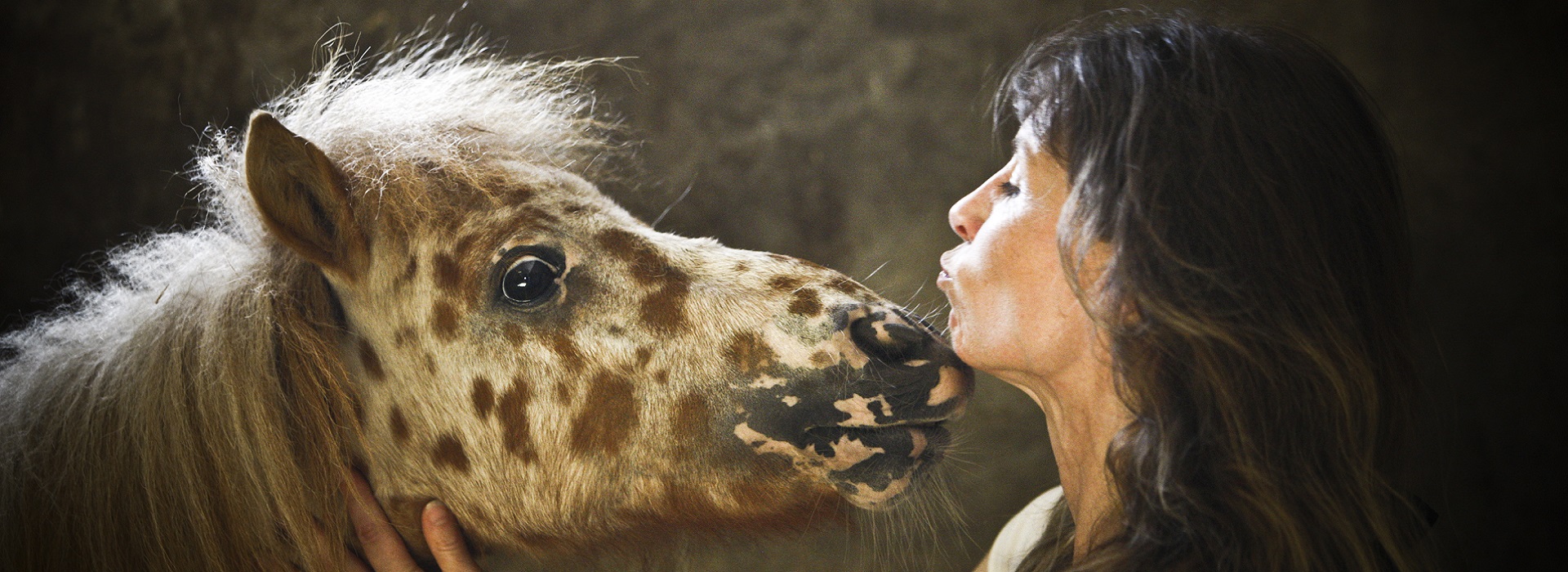Literatur:
Antonovsky, A. (1997): Salutogenese. Zur Entmystifizierung der Gesundheit. Deutsche Herausgabe von Alexa Franke. dgvt-Verlag, Tübingen
Aust, S., & van Dongen, I. (2014). Wer beeinflusst wen? Interaktion zwischen Klient, Pferd und Therapeut. Hogeschool Van Hall Larenstein, Leeuwarden.
Bachi, K. (2013). Application of Attachment Theory to Equine-Facilitated Psychotherapy. Journal of Contemporary Psychotherapy, 43(3), 187-196. doi:10.1007/s10879-013-9232-1
Bachi, K., Terkel, J., & Teichman, M. (2012). Equine-facilitated psychotherapy for at-risk adolescents: the influence on self-image, self-control and trust. Clin Child Psychol Psychiatry, 17(2), 298-312. doi:10.1177/1359104511404177
Bandura, A. (1977): Self-Efficacy: Toward a Unifying Theory of Behavioral Change. In: Psychological Review. 84 (2), 1977, S. 191–215
Brandt, C. (2013). Equine-Facilitated Psychotherapy as a Complementary Treatment Intervention. The Practitioner Scholar: Journal of Counselling and Professional Psychology, 2, 23-427
Deimel, R.; Zink, R. (2019). Snapshot Eight: Horses Touch more than our skin: An Example of Equine-Assisted Palliativ Care. P. 446-448 In: Aubrey Fine (Hrsg.): Handbook of Animal Assisted Therapy. Fifth Edition. Elsevier. Academic PressFischer, S. (2011). Psychodynamisch orientierte Diagnostik in der Equotherapie. Diplomarbeit Universität Wien.
Fureix, C., Jego, P., Henry, S., Lansade, L., & Hausberger, M. (2012). Towards an ethological animal model of depression? A study on horses. PLoS One, 7(6), e39280. doi:10.1371/journal.pone.0039280
Grawe, K., Donati, R. & Bernauer, F. (1994). Psychotherapie im Wandel – Von der Konfession zur Profession. Göttingen: Hogrefe.
Hanggi, E. B. (2005). The Thinking Horse: Cognition and Perception Reviewed. AAEP Proceedings, 51, 246-255.
Hediger, K. (2016). Freie Interaktionen zwischen Patient und Pferd in der pferdegestützten Psychotherapie. In M. Gäng (Ed.), Therapeutisches Reiten (pp. 105-124). München: Ernst Reinhardt.
Hediger, K.; Zink, R. (2020): Pferdegestützte Traumatherapie. 2. Auflage. Ernst Reinhard Verlag München
Julius, H., Beetz, A., Kotrschal, K., Turner, D. C., & Uvnäs-Moberg, K. (2014). Bindung zu Tieren. Psychologische und neurobiologische Grundlagen tiergestützter Interventionen. Göttingen: Hogrefe.
Karol, J. (2007). Applying a traditional individual psychotherapy model to Equine-facilitated Psychotherapy (EFP): theory and method. Clin Child Psychol Psychiatry, 12(1), 77-90.
Kirby, M. (2010). Gestalt Equine Psychotherapy. Gestalt Journal of Australia and New Zealand, 6(2), 60-68.
Knapp, S.; Zink, R. (2018). Svens Abschied. Palliativbegleitung mit Pferd. Mensch und Pferd 3/18 Zeitschrift Ernst Reinhard Verlag
Lentini, J. A., & Knox, M. (2015). Equine-Facilitated Psychotherapy With Children and Adolescents: An Update and Literature Review. Journal of Creativity in Mental Health, 10(3), 278-305. doi:10.1080/15401383.2015.102391
McCullough, L. M., Risley-Curtiss, C., & Rorke, J. (2015). Equine Facilitated Psychotherapy: A Pilot Study of Effect on Posttraumatic Stress Symptoms in Maltreated Youth. Journal of Infang, Child and Adolescent Psychotherapy, 14(2), 158-173.
Mehlem, M. (1996a). Elemente körperorientierter Verfahren im psychotherapeutischen Reiten mit psychosomatisch erkrankten Menschen. In D. K. f. T. R. e.V. (Ed.), Die Arbeit mit dem Pferd in Psychiatrie und Psychotherapie (2nd ed., pp. 74-77). Warendorf: DKThR.
Moeller, S. (1995). Psychotherapie mit dem Medium Pferd unter besonderer Berücksichtigung des körperorientierten Ansatzes. Freie Universität Berlin.
Naber, A.; Kreuzer, L.; Zink, R.; Glenk, L.; Milesi, E.; Palme, R.; Hediger, K. (2019). Heart rate, heart rate variability and salivary cortisol as indicators of arousal and synchrony in clients with intellectual disability, horses and therapist during equine-assisted interventions. Pet Behaviour open access Journal. UCO Press DOI: https://doi.org/10.21071/pbs.v0i7.11801
Opgen-Rhein, C., Kläschen, M., & Dettling, M. (2011). Pferdegestützte Therapie bei psychischen Erkrankungen. Stuttgart: Schattauer.
Petzold, H.; Müller, (2004c): Integrative Kinder und Jugendpsychotherapie – Protektive Faktoren und Resilienzen in der diagnostischen und therapeutischen Praxis. Psychotherapie Forum 4, 185-196, und fpi verfügbar mit Link
Schramm, E., Hediger, K., & Lang, U. E. (2015). From animal behavior to human health: An animal-assisted mindfulness intervention for recurrent depression. Zeitschrift für Psychologie, 223(3), 192-200. doi:10.1027/2151-2604/a000220
Schubenz, S., Aland, E., & Schopp, T. (1993). Das Konzept der Übergangsobjekte und Übergangsphänomene in der Theorie von Winnicott, seine Weiterentwicklung und Anwendung auf das Pferd als Medium in der psychologischen Therapie mit Kindern. Praxisreport Psychologische Therapie und Psychotherapie(1), 31-44
Schultz, P. N., Remick-Barlow, G. A., & Robbins, L. (2007). Equine-assisted psychotherapy: a mental health promotion/intervention modality for children who have experienced intra-family violence. Health Soc Care Community, 15(3), 265-271. doi:10.1111/j.1365-2524.2006.00684.x
Schwaiger, P. (2016). Bindungsgeleitete Interventionen im Therapeutischen Reiten. In M. Gäng (Ed.), Therapeutisches Reiten (pp. 89-104). München: Ernst Reinhardt.
Smith, A. V., Proops, L., Grounds, K., Wathan, J., & McComb, K. (2016). Functionally relevant responses to human facial expressions of emotion in the domestic horse (Equus caballus). Biol Lett, 12(2), 20150907. doi:10.1098/rsbl.2015.0907
Vidrine, M., Owen-Smith, P., & Faulkner, P. (2002). Equine-facilitated group psychotherapy: applications for therapeutic vaulting. Issues Ment Health Nurs, 23(6), 587-603. doi:10.1080/01612840290052730
Wathan, J., Burrows, A. M., Waller, B. M., & McComb, K. (2015). EquiFACS: The Equine Facial Action Coding System. PLoS One, 10(8), e0131738. doi:10.1371/journal.pone.0131738
Wyatt, T. D. (2003). Pheromones and Animal Behaviour. Communication by Smell and Taste. Cambridge: Cambridge University Press.
Zeitler-Feicht, M. H. (2015). Handbuch Pferdeverhalten. Ursachen, Therapie und Prophylaxe von Problemverhalten. Stuttgart: Ulmer.
Zink, R. (2018). Kapitel 11.2 „Besonderheiten der Mensch Pferd Beziehung“ in Hrsg. Wolfahrt, R.; Riedel, M.; Handbuch Tiergestützte Interventionen. Ernst Reinhard Verlag München

